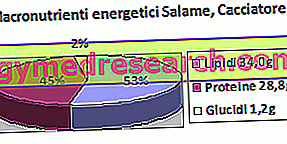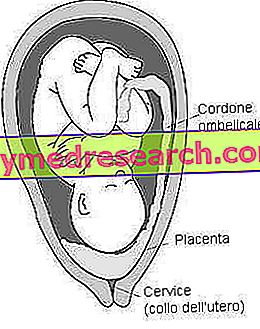Introduction
The allergic reaction caused by the inhalation of the pollens occurs with seasonal recurrence, in correspondence with the period of pollination characteristic for each species responsible for the allergy. For this reason, the patient must know what are the pollen antigens that make it susceptible, where the plants that produce them are located in the territory and what are the allergic consequences that can derive from it.
Because they arise
In summary: the antigenic pollen and the allergic reaction
The pollinosis represent a set of clinical manifestations (rhinitis, conjunctivitis and asthma) associated with allergic inflammation, and supported by IgE-mediated reactions.

Pollen (male reproductive cell) is released, for reproductive purposes, during the flowering season (entomophilous and anemophilous pollination). Anemophilous plants disperse in the air a large quantity of light and aerodynamic pollen grains, so that they reach and fertilize the female gametes of the same species. The pollen acquires its full biological activity through hydration, both in the atmosphere and on the ground or in case of contact with the moist mucous membranes of the airways. When in contact with water or following the encounter with the stigma of a flower, the pollen granule releases its own proteins (exine and intin). For some species, protein elements and glycoproteins contained in the cytoplasm are also released: these components constitute the antigen.
The mechanism of pollen release (antesi) varies according to the species and some climatic parameters: hot and windy days facilitate pollination, while a high relative humidity of the air makes it difficult. In addition to meteorological factors and ideal dispersion conditions, anemophilous pollination, to cause allergic phenomena, requires the release of an enormous number of pollen grains and a wide distribution of the productive plant in the territory (there is a "threshold dose" below the which the pollen released is insufficient to trigger the allergic reaction).
The threshold dose of a given antigenic pollen therefore indicates the minimum atmospheric concentration, beyond which susceptible individuals can begin to develop symptoms of the allergic reaction. Each patient has his own individual threshold and indicatively the symptomatology is all the more serious the greater the overshoot in excess of the threshold concentration value.
Aerobiological monitoring makes it possible to update pollen (or flower) calendars, which provide an important contribution to the clinical management of allergy. In this way, the allergic patient can be updated in real time regarding the potential exposure to the allergen and approach the correct drug therapy, on medical indication.
Symptoms
Pollen allergy shows a complex of clinical symptoms (ocular, nasal and bronchial), which occur with seasonal periodicity, more frequently in spring and autumn.
The manifestations of pollinosis include allergic rhinitis and bronchial asthma, closely associated both clinically and pathogenically. In fact, numerous evidences show that asthma and rhinitis can be considered different clinical expressions of a single inflammatory process on the respiratory tract (nose and bronchi), with common pathophysiological mechanisms (" United Airways Disease ").
Depending on the period of onset of symptoms, pollen allergies are distinguished in Italy:
- early, pre-spring : related to the presence of flowering plants from December to May and to emerging pollinosis.
- spring-summer: the most frequent, from sensitization to plants with flowering between April and September.
- summer-autumn: rarer, caused by plants with flowering in August and September.
The onset, intensity and duration of the symptoms of pollen allergies depend mainly on variations in the pollen concentrations present in the atmosphere. Manifestations affecting the eyes are usually associated with nasal symptoms, although they can sometimes occur individually. Symptoms can quickly and abruptly disappear, just as they occurred, but sometimes persist for as long as they are exposed to allergens.
Symptoms that appear in the eyes (allergic conjunctivitis):
- Profuse tearing (sometimes irritating);
- Itching in the conjunctivae, which appear reddened and oedematous;
- Photophobia (light annoyance).
At nasal level the pollinosis manifests itself with:
- Repeated sneezing;
- Itching at the nose or palate;
- Abundant and light-colored secretion;
- Congestion, with a feeling of a stuffy nose;
- Smell reduction.
Respiratory symptoms, associated with the progressive evolution of allergic rhinitis in asthma:
- Respiratory difficulty, associated with a sense of chest tightness;
- Dry and irritating cough;
- Intrathoracic hisses;
- Asthma-like crisis.
Other symptoms that may arise in association with the appearance of pollen allergy are:
- Frontal headache (frequent);
- Sense of general malaise;
- Feeling tired and having difficulty concentrating;
- Skin manifestations (hives or dermatitis) or dependent on other internal organs (rarely).
In allergic subjects, in addition to oculo-rhinitic and / or asthmatic symptoms, implications may sometimes occur due to pollen-food cross-reactivity, which is manifested by:
- Itching and swelling of the oro-labial mucosa;
- Burning on the palate and throat;
- Swallowing disorders.
This event takes place within minutes of ingestion of plant foods, in particular with some types of fresh fruit and vegetables, which contain antigens that cause cross-reactions with antigenic pollens: this is the so-called oral allergic syndrome (SOA) . Sometimes they are accompanied by extra-oral and / or systemic manifestations (gastrointestinal, urticaria, asthma and anaphylactic shock).
Deepening. Allergic rhinitis and bronchial asthma
Rhinitis is an inflammatory allergic reaction of the upper respiratory tract, which occurs mainly on the mucous membrane of the nose, also affecting the eyes. In its allergic variant, rhinitis may occur as a consequence of inhaling allergenic pollens. This disease is widespread: the seasonal form, also called hay fever (improperly, because in reality it is not associated with fever) can appear at any age. Allergic rhinitis manifests itself with some characteristic symptoms: consecutive sneezing, stuffy and "dripping" nose, throat irritation, itchy nose, headache, etc. Often, allergic rhinitis anticipates bronchial asthma: they are pathologies supported by a common inflammatory process of the airways, therefore it is common to find an association between the two different clinical expressions. Bronchial asthma is an allergic-based inflammatory disease due to the inhalation of allergens, characterized by an obstruction of the respiratory tract and an increase in responsiveness in the bronchi. The severity of asthma symptoms varies from case to case. The disease is manifested by respiratory crisis: sudden and gradual episodes in which the mucosa of the bronchi thickens, the muscles that surround them contract and the passage of air is made more difficult. The asthmatic patient, therefore, is subject to difficulty in breathing, coughing, feeling of chest tightness and wheezing.
Oral allergic syndrome (SOA)
In subjects allergic to pollens, the oral allergic syndrome may appear following the ingestion of some foods: there are common allergens to pollens and to some types of fruit and vegetables. In general, the onset of eye-respiratory symptoms, typical of pollen allergy, tends to precede the appearance of cross-food reactions, even of some years. The cause of this cross-allergy is due to the botanical "kinship" among the pollens of some families and various foods: the immune system also reacts to the substances contained in the foods, due to their affinity with the antigens contained in the inhaled pollen grains. The allergenic protein that causes this cross reactivity is profilin, which acts like a pan-allergen. Oral allergy syndrome occurs only in a small proportion of patients with pollen allergy (about 10%) and does not involve all the elements listed below. Furthermore, it is possible to detect specific IgE to plant foods without any clinical manifestation following the ingestion of such foods.
Foods for which a possible cross-reactivity with pollen is described | |
Pollen in general | honey |
Gramineae | Melon, Watermelon, Orange, Kiwi, Tomato, Wheat, Peach, Apricot, Cherry, Plum, Peanuts, Cereals, Almond, Kiwi, Citrus |
Ambrosia | Melon, Banana |
Compositae (artemisia, ambrosia) | Chamomile, Celery, Carrots, Melon, Watermelon, Apple, Banana, Pumpkin Lettuce, Chicory, Dandelion, Sunflower Oil, Margarine, Chestnut, Fennel, Parsley, Green Pepper, Honey |
pellitory | Mulberries, Basil, Peas, Nettle, Melon, Cherry |
Olivo | Olives, Olive Oil |
Betulaceae and Corylaceae (birch, alder, hazel, hornbeam) | Apple, Peach, Apricot, Walnut, Hazelnuts, Cherry, Banana, Carrot, Potato, Fennel, Celery, Peanut, Almond, Pistachio, Plum, Pear, Medlar, Raspberry Strawberry, Kiwi, Parsley. |
core | Hazelnuts |



